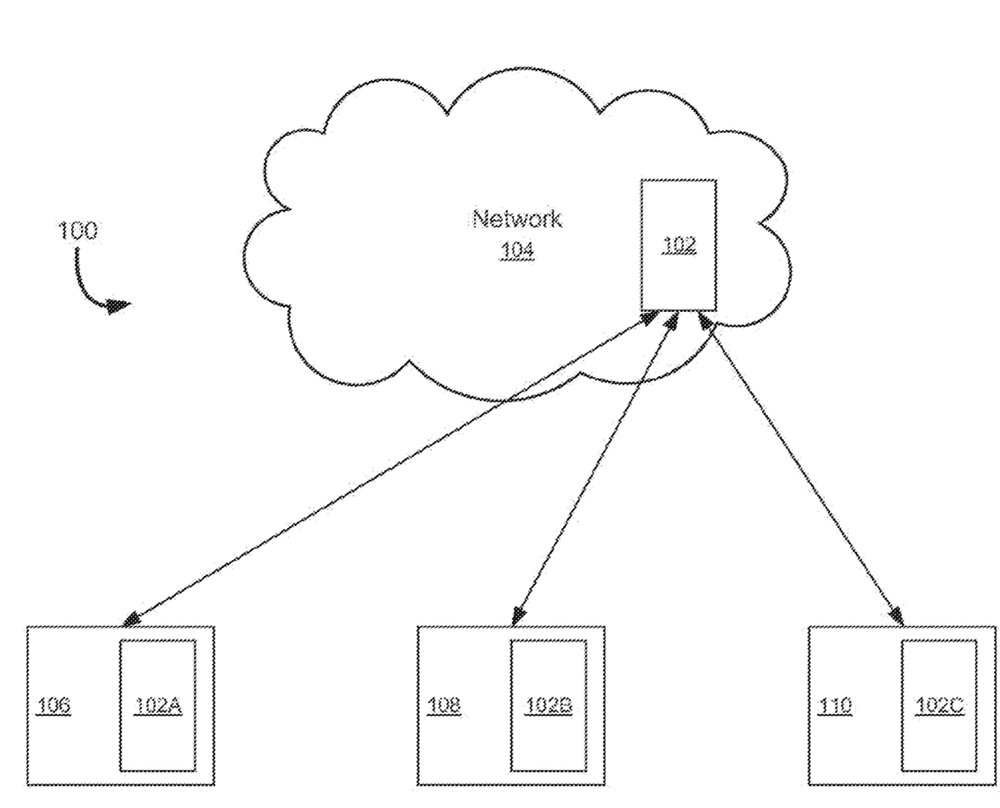Apple files for — and is granted — lots of patents by the U.S. Patent & Trademark Office. Many are for inventions that never see the light of day. However, you never can tell which ones will materialize in a real product, so here are today’s patent highlights:
Apple has been granted a patent (number 20160196247) that shows the company is considering ways to make collaborating on iCloud documents easier. The patent is dubbed, appropriately, “collaborative document editing.”

Once you’ve saved a document on iCloud Drive, you can now share it with a friend or colleague. In Pages, Numbers, or Keynote, choose Share > Share Link via iCloud, or click the Share button in the toolbar. You can choose to allow the person you share the document with to edit the document. If you only want them to see the document and not make changes, choose Read Only from the Permissions menu. You can protect the document by clicking Add Password and setting a password.
Then you can choose how to invite the other person to access your document. You can do this via Mail, Messages, Twitter, Facebook, or other means. Or you can just copy a link and send it yourself. Click Share Document, and enter the email address, or other information needed, to share it.
In some implementations of the newly awarded Apple patent, animations are presented when updating a local document display to reflect changes made to the document at a remote device. In some implementations, a user can selectively highlight changes made by collaborators in a document.
In some implementations, a user can select an identifier associated with another user to display a portion of a document that includes the other user’s cursor location. In other implementations, text in document chat sessions can be automatically converted into hyperlinks which, when selected, cause a document editor to perform an operation.
Apple has also been granted a patent (number 20160196046) for “user configurable quick groups.” This invention is geared to defining quick groups for easily associating keywords with an object (e.g., a media objection) accessible using an iOS or OS X device.

In the patent filing, Apple notes that using electronic devices, users may access a variety of media objects, such as videos and images. These objects may be stored in one or more folders, which may be named for an attribute of the objects stored in the folder. Some videos and images, however, may include many attributes that the user would like to associate with each of the media objects.
For example, a user may wish to associate vacation pictures taken with friends with tags for the location of the vacation, the activity conducted, the people in each picture, or any other tag that may be of interest to the user. Most Apple devices already allow you to define metadata keywords that can be associated with media objects.
However, as Apple notes, some of us have large numbers of media objects with which the users may wish to associate keywords. Using keywords as implemented in some devices, users may be forced to select media objects to be associated with a particular keyword, and then select the keyword using an input mechanism, for example by selecting the appropriate keyword icon displayed on-screen. This process may be “cumbersome and time intensive, and thus prevent busy or impatient users from avoid associating keywords with media objects,” according to Apple. The company’s goal is for a system that allows you to easily associate tags with media objects accessible using your iOS or OS X device.
The user of an electronic device may define several keywords that identify attributes of an object accessible using the electronic device. The user may associate keywords with an object to link the attribute of the keyword with the object (e.g., associate a keyword entitled “vacation” to vacation pictures). The user may assign a shortcut key to each of a subset of the keywords, referred to as quick groups, by which the user may rapidly associate the keyword to an Object. In some embodiments, the electronic device may select the shortcut key of a quick group from the letters of the quick group to help the user remember the shortcut key.
Finally, Apple has been granted a patent (number 20160196031) for “presenting email on a touch device” that hints at changes in the Mail app on the iPhone and iPad (and, perhaps, the Mac, as well). Per the invention, messages are presented so as to make effective use of the display area to convey information to the user.

For example, message content of primary interest to the user (e.g., new content) can be distinguished from secondary content (e.g., content quoted from a previous message), and the message can be initially displayed with the secondary content hidden using an expandable visual indicator that the user can expand to reveal the secondary content. Different elements within a message, such as textual content and graphical content elements, can be scaled independently using magnification factors optimized for each element.
